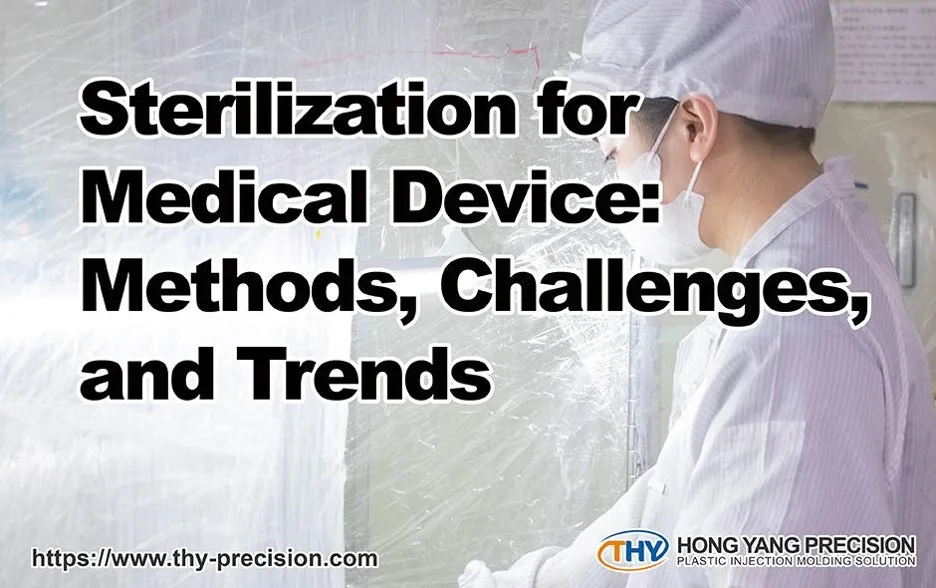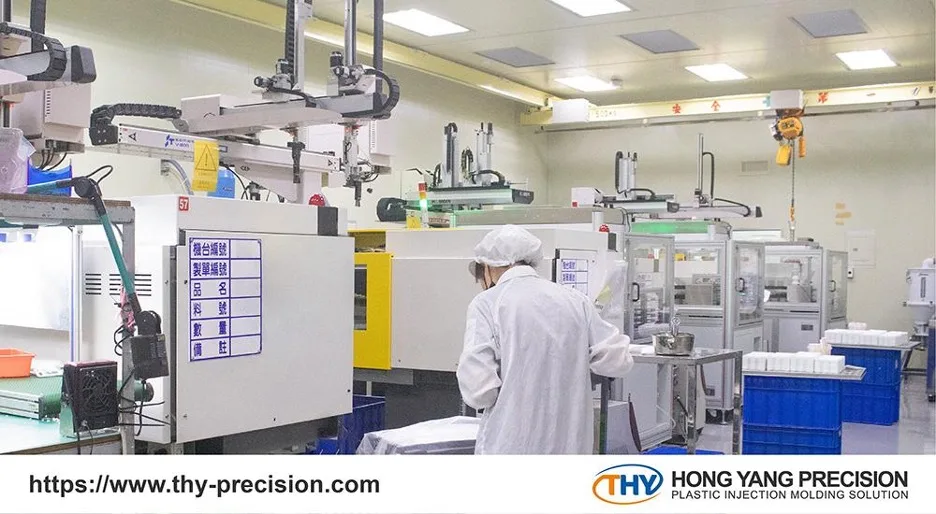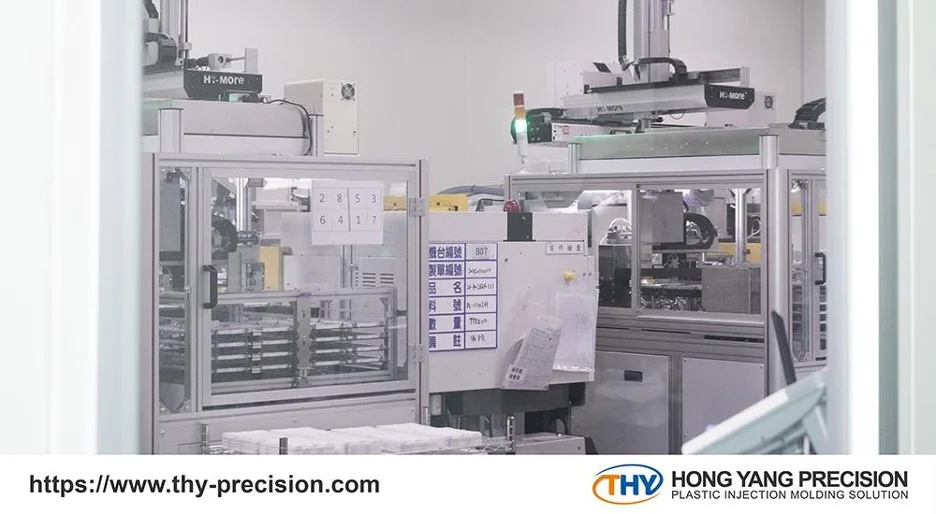Published on 2025-07-29

Sterilization for medical devices is fundamental in ensuring patient safety and preventing infections. Without proper sterilization, surgical tools and implants could spread infections. To protect patients, strict global standards ensure that medical devices are sterilized effectively. Let’s explore the details in the following sections.
Table of Contents
Sterilization for Medical Device: Why It Is Crucial for Patient Safety

Medical devices, from surgical instruments to implantable components, come into direct contact with human tissue and body fluids. Without proper sterilization, they can become carriers of harmful microorganisms, leading to serious infections, complications, and even life-threatening conditions.
To mitigate these risks, global sterilization standards have been established to enforce strict sterility requirements for medical devices before they reach healthcare facilities. These include ISO 13485, FDA regulations, and CE compliance in the European Union, each of which plays a vital role in ensuring the safety and efficacy of sterilized medical devices.
1.ISO 13485
ISO 13485 is an internationally recognized standard that establishes the requirements for a comprehensive quality management system specifically designed for the medical device industry, covering all aspects of design, manufacturing, and sterilization.
This standard mandates that manufacturers implement and continuously maintain stringent sterilization validation processes, ensuring that every device meets consistent sterility levels before reaching the market; additionally, it requires the establishment of robust risk management frameworks to identify, assess, and mitigate potential hazards associated with sterilization procedures.
Compliance with this standard is often a prerequisite for companies seeking to distribute medical devices in global markets, as it serves as a benchmark for regulatory approval in numerous countries.
2.FDA regulation
The U.S. Food and Drug Administration (FDA) is the regulatory authority overseeing medical devices in the United States. Under 21 CFR Part 820, also known as the Quality System Regulation (QSR), manufacturers must validate their sterilization processes through extensive testing and continuous monitoring to verify that all microbial life has been effectively eliminated.
The FDA also evaluates different sterilization methods—including ethylene oxide (EtO) and radiation sterilization—to confirm that they meet the required sterility assurance levels (SAL), guaranteeing a product’s long-term safety and effectiveness in clinical use.
3.CE compliance
In the European Union, compliance with CE marking regulations as outlined in the Medical Device Regulation (MDR 2017/745) is essential for manufacturers wishing to distribute their medical devices in European healthcare markets. This regulatory framework establishes comprehensive sterilization requirements to ensure that medical devices meet stringent health, safety, and environmental standards before they are approved for sale.
Manufacturers must provide extensive documentation detailing their sterilization processes, including validation reports, microbial inactivation studies, and risk assessments, all of which are reviewed by Notified Bodies responsible for granting CE certification.
Sterilization for Medical Device vs. Disinfection: Understanding the Difference
Sterilization for medical devices and disinfection are two processes used to eliminate harmful microorganisms in the medical device and healthcare industries. However, their purposes, effectiveness, and applications differ significantly.
1.Disinfection
Disinfection refers to reducing or eliminating most pathogenic microorganisms from inanimate surfaces. Disinfection is typically accomplished with chemical disinfectants such as alcohol, chlorine, or hydrogen peroxide. While disinfection effectively removes bacteria, fungi, and some viruses, it does not eliminate all microbial life, especially bacterial spores, which can survive harsh environmental conditions. Disinfection is commonly used for hospital surfaces, reusable equipment, and low-risk medical devices, but it is insufficient for invasive medical devices.
2.Sterilization
Sterilization for medical devices is a mandatory process that eliminates all microorganisms, including bacterial spores, viruses, and fungi. This is achieved through physical or chemical sterilization methods such as steam sterilization (autoclaving), ethylene oxide (EtO), gamma irradiation, or hydrogen peroxide gas plasma.
Sterilization is both a safety requirement and a legal and regulatory requirement. Without proper sterilization, there is a significant risk of healthcare-associated infections (HAIs). In summary, sterilization is a fundamental pillar of modern medical manufacturing.
Sterilization for Medical Device: 8 Standard Methods Used in Healthcare
Sterilization for medical devices is essential to prevent infections and ensure patient safety. Several sterilization methods are used in the healthcare industry, each with its mechanism, benefits, and applications.
1.Ethylene Oxide (EtO) Sterilization
EtO sterilization is a low-temperature, gas-based process that kills microorganisms by disrupting their DNA and metabolic processes. It benefits medical devices such as plastics, rubber, and electronics that cannot withstand high heat or moisture.
Applications of EtO Sterilization
- Heat- and moisture-sensitive devices (e.g., catheters, endoscopes, and surgical kits)
- Disposable plastic medical devices (e.g., IV tubing, syringes, and bandages)
- Electronic medical components (e.g., pacemakers, defibrillators, and sensors)
2.Gamma Irradiation Sterilization
Gamma irradiation uses high-energy gamma rays from sources like Cobalt-60 to break down the DNA of bacteria, viruses, and fungi, preventing their reproduction. It is one of the most efficient, residue-free sterilization methods. Gamma sterilization is fast and practical but can alter the properties of certain plastics by making them brittle or discolored, requiring careful material selection.
Applications of Gamma Sterilization
- Pre-packaged, single-use medical supplies (e.g., surgical gloves, bandages, and hypodermic needles)
- Sterile pharmaceutical products (e.g., vaccines and injectable medications)
- Medical implants and prosthetics (e.g., artificial joints and stents)
3.Steam Sterilization (Autoclaving)
Steam sterilization, or autoclaving, uses pressurized saturated steam at 121°C to 135°C to denature proteins and kill microorganisms. It is one of the most widely used methods due to its cost-effectiveness and efficiency. However, autoclaving is unsuitable for plastic or electronic devices that may degrade under high heat and moisture.
Applications of Steam Sterilization
- Metal surgical tools and instruments (e.g., scalpels, forceps, and clamps)
- Glassware used in laboratories and hospitals
- Fabric-based medical products (e.g., surgical drapes and gowns)
4.Glass Plasma Sterilization
Glass plasma sterilization, or hydrogen peroxide gas plasma sterilization, uses ionized hydrogen peroxide to destroy microbial cells. This method operates at low temperatures and is ideal for devices that cannot withstand heat or moisture. Although glass plasma sterilization leaves no toxic residues, its effectiveness depends on surface contact, making it less effective for devices with narrow lumens or deep cavities.
Applications of Glass Plasma Sterilization
- Heat-sensitive medical instruments (e.g., endoscopes and fiber-optic devices)
- Electronic medical equipment (e.g., pacemakers and thermometers)
- Reusable plastic components that require sterilization without deformation
5.Sporicidal Chemical Sterilization
Sporicidal chemical sterilization involves liquid chemical sterilants such as glutaraldehyde, peracetic acid, and hydrogen peroxide. When equipment is submerged for extended periods, these chemicals kill bacteria, spores, and viruses. However, chemical residues must be thoroughly rinsed to prevent toxic reactions in patients, and the process is less effective for high-volume sterilization.
Applications of Sporicidal Chemical Sterilization
- Flexible medical instruments (e.g., endoscopes and dental tools)
- Hospital reprocessing of reusable medical equipment
- Emergency sterilization when heat-based methods are unavailable
6.Dry Heat Sterilization
Dry heat sterilization exposes medical devices to temperatures above 160°C for extended periods, effectively oxidizing and killing microorganisms. Unlike steam sterilization, this method does not involve moisture, making it ideal for non-corrosive materials. Although effective, dry heat sterilization requires longer processing times, making it less efficient for high-volume sterilization needs.
Applications of Dry Heat Sterilization
- Glass syringes and bottles
- Metal surgical instruments that are moisture-sensitive
- Oil-based medical products that cannot be exposed to water
7.E-Beam (Electron Beam) Sterilization
E-Beam sterilization uses high-energy electron beams to kill microorganisms by breaking their DNA strands. It works similarly to gamma sterilization but has a lower penetration depth, making it suitable for thin, surface-sterilized products.
Applications of E-Beam Sterilization
- Plastic medical packaging materials
- Disposable surgical tools and implants
- Sensitive pharmaceuticals that require rapid sterilization
8.X-Ray Sterilization
X-ray sterilization uses high-energy photons to kill microorganisms by disrupting their DNA structure. It works similarly to gamma sterilization but offers better penetration control. Although X-ray sterilization provides precise and effective sterilization, its higher cost than gamma irradiation limits its widespread use.
Applications of X-Ray Sterilization
- Sterilization of medical implants (e.g., orthopedic devices and stents)
- Pharmaceutical products and pre-filled syringes
- Sterile packaging for bulk medical device shipments
Sterilization for Medical Device: Top 5 Barriers to Safe and Efficient Processes
Achieving safe and efficient sterilization comes with several challenges. Below are the five significant barriers that impact the effectiveness and compliance of medical device sterilization.
1.Material Compatibility
Medical devices are made from various materials such as plastics, metals, ceramics, and electronic components, each with different tolerances to sterilization methods.
For example, Ethylene Oxide (EtO) sterilization is suitable for heat-sensitive materials, but residual gas may weaken certain plastics. Steam sterilization is highly effective but can warp or degrade certain plastics.
When selecting a sterilization method, manufacturers must ensure the device materials can withstand the process.
2.Design Complexity
Modern medical devices have increasingly intricate designs, often containing narrow channels, enclosed structures, and electronic components, which may hinder sterilant penetration.
For instance, Endoscopes and catheters have internal cavities that may block sterilization gas or liquid, leading to microbial retention. Devices with electronic components cannot be exposed to high heat or moisture, making traditional steam sterilization unsuitable. Optimizing device design ensures the sterilant can fully reach all surfaces.
3.Regulatory Compliance
Sterilization must meet stringent global regulations, with different standards across countries, including:
- ISO 13485 –Governs medical device quality management systems, ensuring sterilization effectiveness.
- FDA (U.S. Food and Drug Administration) – Requires extensive testing and validation data for sterilization approval.
- CE Certification (European Union) –Mandates compliance with EN 556 sterilization standards for medical devices.
Regulatory approval is often lengthy and costly, requiring thorough sterilization validation and documentation.
4.Cost
Testing and validation fees vary widely between methods. Select the most cost-effective sterilization method based on device characteristics and batch size. Batch sterilization may also be an option.
5.Environmental Impact
Some sterilization methods have adverse environmental effects, such as steam sterilization, which consumes large amounts of water and energy and increases carbon emissions. Develop eco-friendly sterilization technologies, such as UV-C sterilization or cold plasma sterilization, which are practical and sustainable.
Sterilization for Medical Device: Future Trends Shaping the Medical Industry

As new materials and complex medical devices continue to emerge, innovative sterilization methods will be essential to meet the evolving demands of modern healthcare. The future of medical device sterilization is shaped by cutting-edge innovations aimed at improving speed, reducing environmental impact, and ensuring compatibility with modern medical materials. Below are four key trends transforming medical device sterilization:
1.Low-Temperature Sterilization
Modern medical devices, particularly those with sensitive electronics or heat-sensitive polymers, cannot withstand traditional high-temperature sterilization methods. With increasing demand for precision medical instruments, low-temperature sterilization is expected to become a mainstream method for medical device manufacturers.
Low-temperature sterilization technologies such as vaporized hydrogen peroxide (VHP) and gas plasma sterilization are gaining popularity. They offer benefits such as minimal heat exposure to prevent material degradation and shorter sterilization cycles, enhancing efficiency.
2.Automation in Sterilization Processes
Automation is transforming the medical industry, and sterilization is no exception. AI-powered robotic sterilization systems and automated sterilization monitoring are being developed to:
- Ensure consistent sterilization quality by reducing human error.
- Speed up processes while maintaining regulatory compliance.
- Improve traceability by integrating sterilization data into innovative healthcare systems.
3.Nanotechnology for Sterilization
Antimicrobial nanocoatings and nano-based sterilization techniques are being developed to prevent microbial growth on medical device surfaces and enhance sterilization efficacy by targeting microscopic bacteria and viruses.
It also reduces the need for repeated sterilization cycles, extending device longevity. These self-sterilizing nanomaterials can reduce contamination risks and improve long-term device hygiene in hospitals and surgical environments.
4.UV-C Sterilization: A Chemical-Free Approach
Ultraviolet-C (UV-C) light sterilization is gaining traction as a fast, non-toxic method. UV-C technology works by emitting high-energy UV light to destroy microbial DNA. Benefits of UV-C sterilization include:
- Rapid disinfection without using heat or chemicals.
- Environmentally friendly operation with no hazardous waste.
- Ideal for surface and airborne pathogen control in medical facilities.
With growing concerns about sustainability and chemical exposure, UV-C sterilization is set to play a crucial role in the future of medical sterilization.
Achieve Excellence in Medical Device Manufacturing with THY Precision
THY Precision is a leading medical device manufacturing expert specializing in high-precision plastic injection molding. With extensive experience, THY Precision ensures that every medical component meets the highest quality, safety, and regulatory compliance standards. We are committed to pushing the boundaries of innovation by integrating cutting-edge sterilization solutions and advanced materials to enhance the durability and reliability of medical devices. Contact us today, and let us help you bring safe, high-quality medical devices to the global market.
Learn more:
Design for Medical Devices: Turning Concepts into Market Launch
Medical Components Manufacturing: Master 6 Core Technologies
